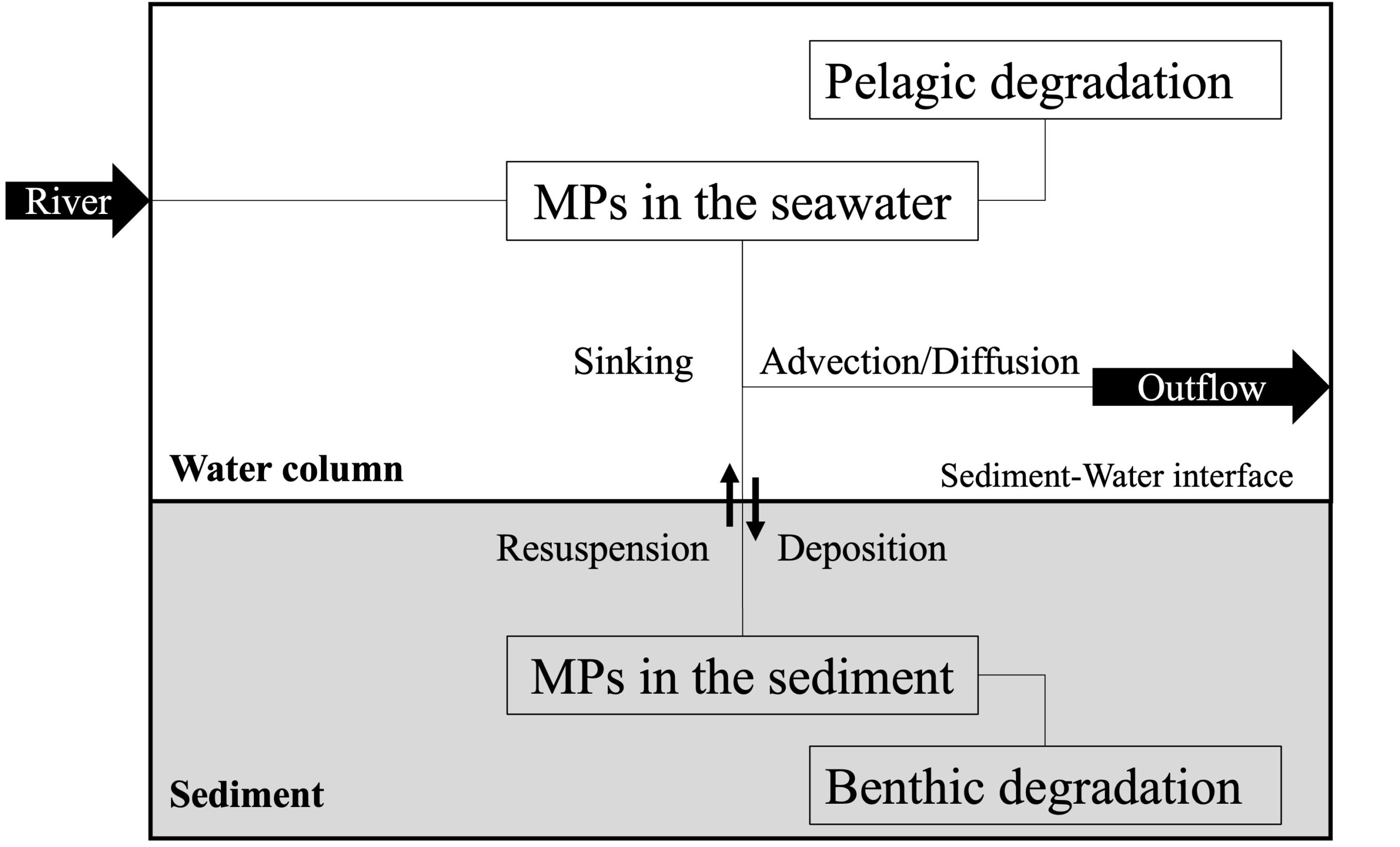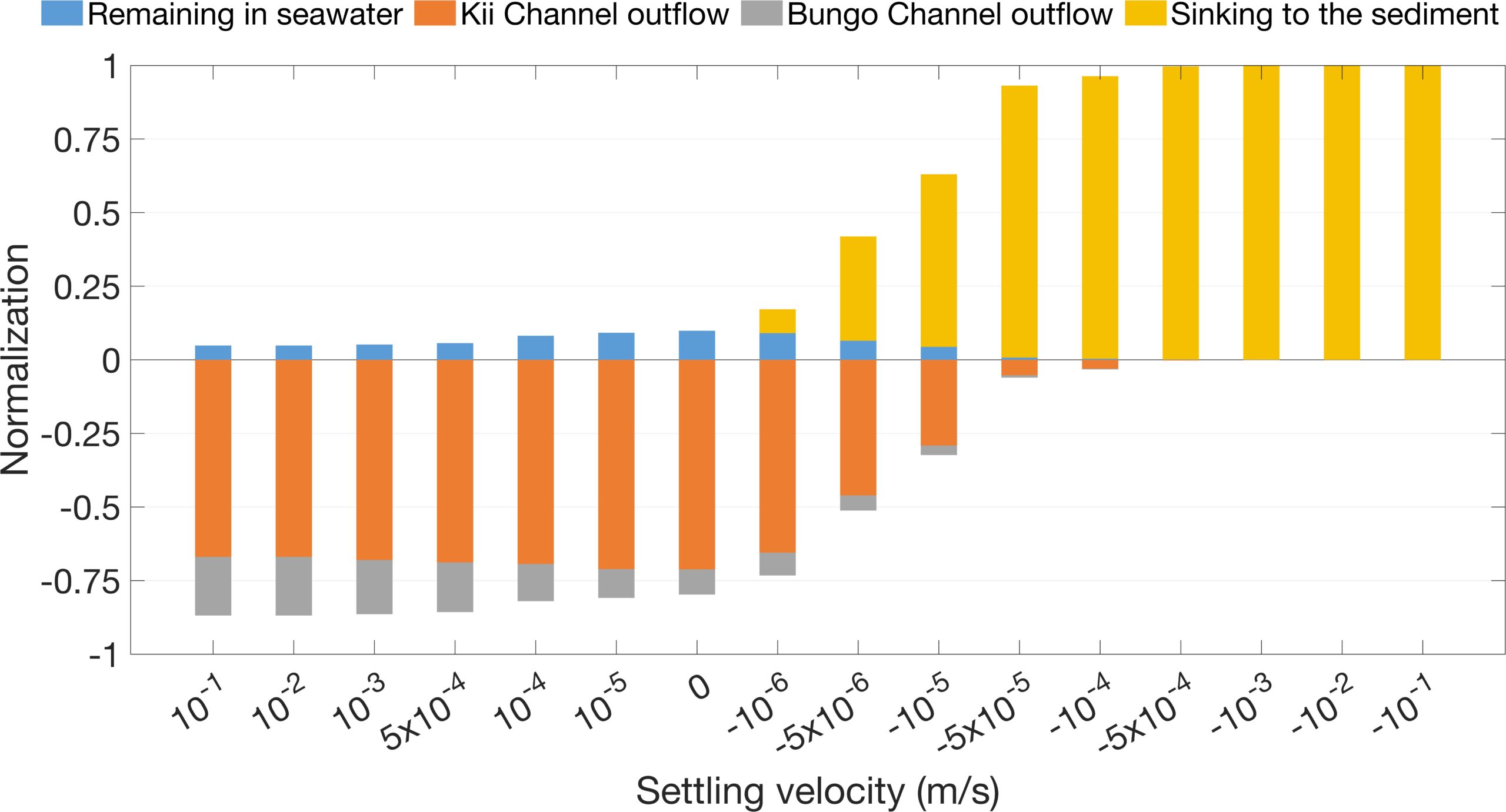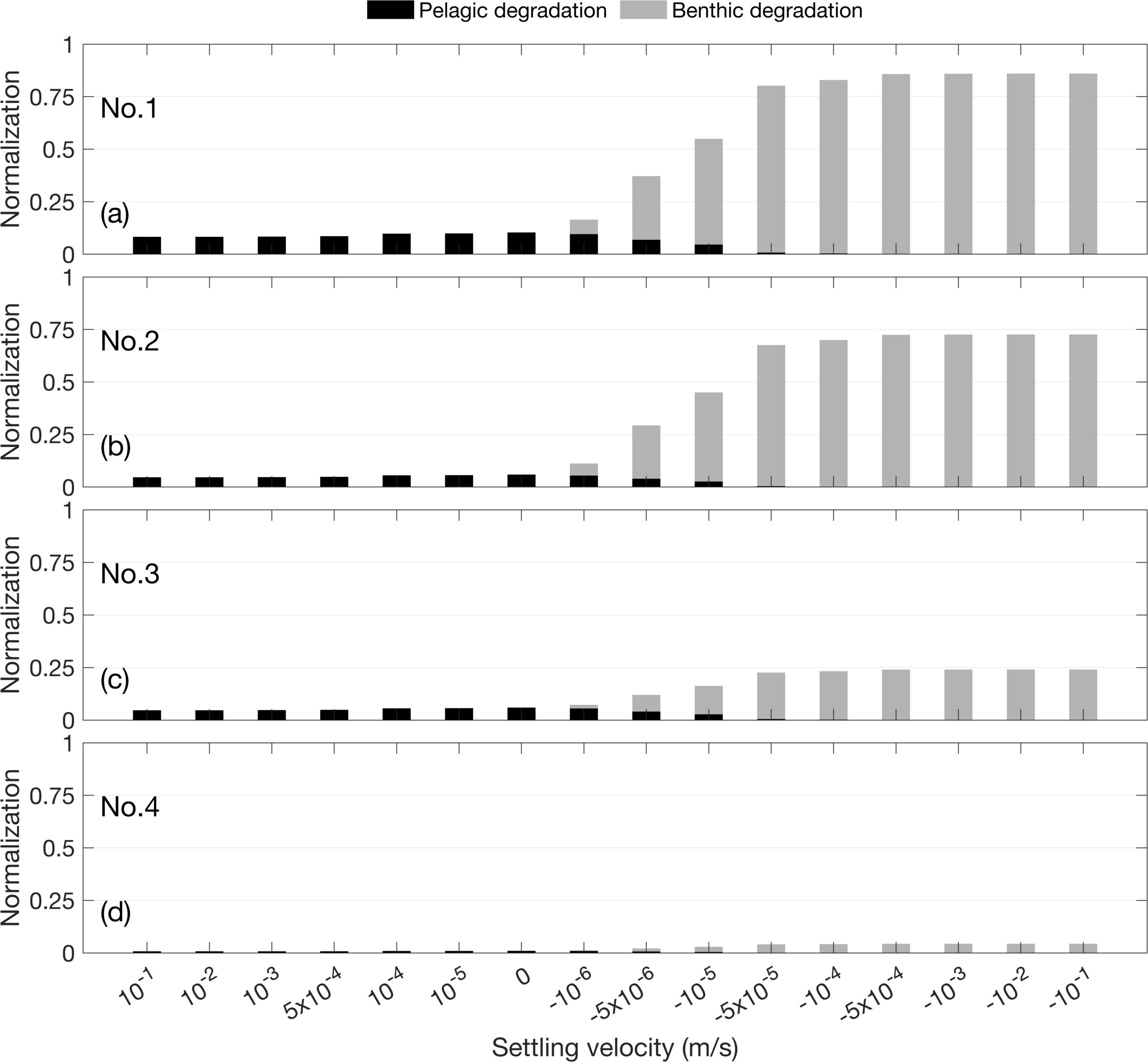Transport and mass budget of biodegradable microplastics in the Seto Inland Sea
Distribution characteristics and transport processes of biodegradable microplastics in the Seto Inland Sea, Japan
Positively and neutrally buoyant microplastics mainly outflow from the Seto Inland Sea into the Pacific Ocean, whereas negatively buoyant MPs hardly leave the Seto Inland Sea and are primarily deposited and degraded near river mouths. Traditional microplastics are difficult to degrade quickly and thus remain in the marine environment for long periods. However, the use of biodegradable microplastics can significantly reduce microplastic pollution in the marine environment, especially in sediments.
Microplastics (MPs) pollution is a prevalent environmental problem that affects ecosystems globally. Despite the growing research on the environmental effects of MPs, a significant research gap remains in understanding the differences of environmental behavior and distribution patterns between biodegradable MPs and traditional MPs.
Using a three-dimensional hydrodynamic model and treating MPs as tracers with vertical velocity, this study simulated the transport of positively, neutrally, and negatively buoyant biodegradable MPs from rivers. The results show that positively buoyant MPs have significant seasonal variations and are mainly distributed in the surface layer. Neutrally buoyant MPs are distributed in all water depths, with a high (low) concentration in the eastern (western) Seto Inland Sea (SIS), characterized by winter mixing and summer stratification. Negatively buoyant MPs accumulate in the sediments and exhibit lower concentrations in seawater. Positively and neutrally buoyant MPs mainly outflow from the SIS into the Pacific Ocean, whereas negatively buoyant MPs hardly leave the SIS and are primarily deposited and degraded near river mouths. A settling velocity of –10–6to –5 × 10–5m s–1 (downward) greatly affects the concentration of MPs in seawater. However, large upward and downward velocities outside this range do not result in pronounced changes. Due to their inherent resistance to degradation, non-biodegradable MPs persist for a long time in the ocean. When these MPs sink into sediments, they can accumulate continuously without significant degradation. As the settling velocity increases, the ability of particles to leave the estuary decreases, exacerbating their accumulation on the seafloor. These accumulated non-biodegradable MPs may exacerbate a long-term impact on the environment.
With a higher degradation rate in sediments than in seawater, the biodegradable MPs do not accumulate in the sediments and can eventually reach a stable concentration in the sediments. The degradation of MPs in the sediment and seawater also reduces the outward flux of MPs from the SIS into the Pacific Ocean.
Reference URL: https://www.sciencedirect.com/science/article/pii/S0304389425008258
Bibliographic Information
Distribution characteristics and transport processes of biodegradable microplastics in the Seto Inland Sea, Japan,
Yu Bai, Xinyu Guo, Takashi Masaki, Takako Kikuchi, Tomoya Kataoka, Hirofumi Hinata, Xueting Zhao, and Yaxian Li,
Journal of Hazardous Materials, 2025, 491: 137911, 10.1016/j.jhazmat.2025.137911.
Fundings
- Moonshot Research and Development Program (Grant Number JPNP18016)
- New Energy and Industrial Technology Development Organization (NEDO)
- JST SPRING, Japan (Grant Number JPMJSP2162)
Media
-

Conceptual scheme of the microplastics (MPs) transport module.
The physical and biogeochemical processes controlling the behavior of MPs in the SIS are advection and diffusion, deposition, resuspension, and degradation processes.
credit : Xinyu Guo, Ehime University
Usage Restriction : Please get copyright permission -

Relationship between settling velocity and the normalized masses of MPs.
A positive value indicates the proportion of riverine MPs retained within the SIS, and a negative value represents the proportion of riverine MPs that either outflow or degrade.
credit : Xinyu Guo, Ehime University
Usage Restriction : Please get copyright permission -

Relationships between degradation parameters, settling velocity, and the normalized masses of MPs.
The first group represents biodegradable microplastics, while the fourth group represents non-biodegradable microplastics. The second and third groups represent intermediate values.
credit : Xinyu Guo, Ehime University
Usage Restriction : Please get copyright permission
Contact Person
Name : Xinyu Guo
Phone : +81-89-927-9824
E-mail : guo.xinyu.mz@ehime-u.ac.jp
Affiliation : Center for Marine Environmental Studies, Ehime University

